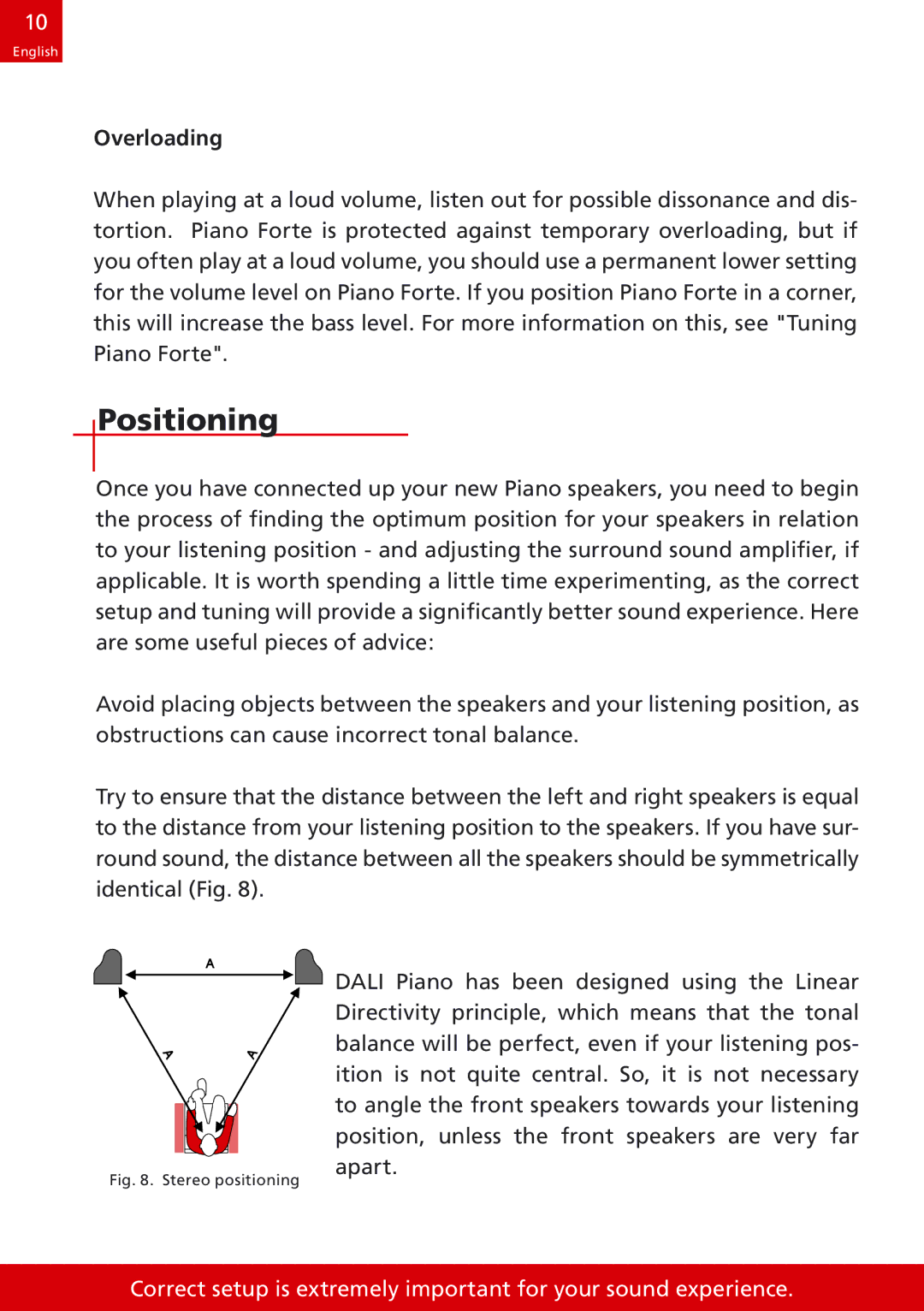
10
English
Overloading
When playing at a loud volume, listen out for possible dissonance and dis- tortion. Piano Forte is protected against temporary overloading, but if you often play at a loud volume, you should use a permanent lower setting for the volume level on Piano Forte. If you position Piano Forte in a corner, this will increase the bass level. For more information on this, see "Tuning Piano Forte".
Positioning
Once you have connected up your new Piano speakers, you need to begin the process of finding the optimum position for your speakers in relation to your listening position - and adjusting the surround sound amplifier, if applicable. It is worth spending a little time experimenting, as the correct setup and tuning will provide a significantly better sound experience. Here are some useful pieces of advice:
Avoid placing objects between the speakers and your listening position, as obstructions can cause incorrect tonal balance.
Try to ensure that the distance between the left and right speakers is equal to the distance from your listening position to the speakers. If you have sur- round sound, the distance between all the speakers should be symmetrically identical (Fig. 8).
DALI Piano has been designed using the Linear Directivity principle, which means that the tonal balance will be perfect, even if your listening pos- ition is not quite central. So, it is not necessary to angle the front speakers towards your listening position, unless the front speakers are very far apart.
Fig. 8. Stereo positioning
Correct setup is extremely important for your sound experience.
